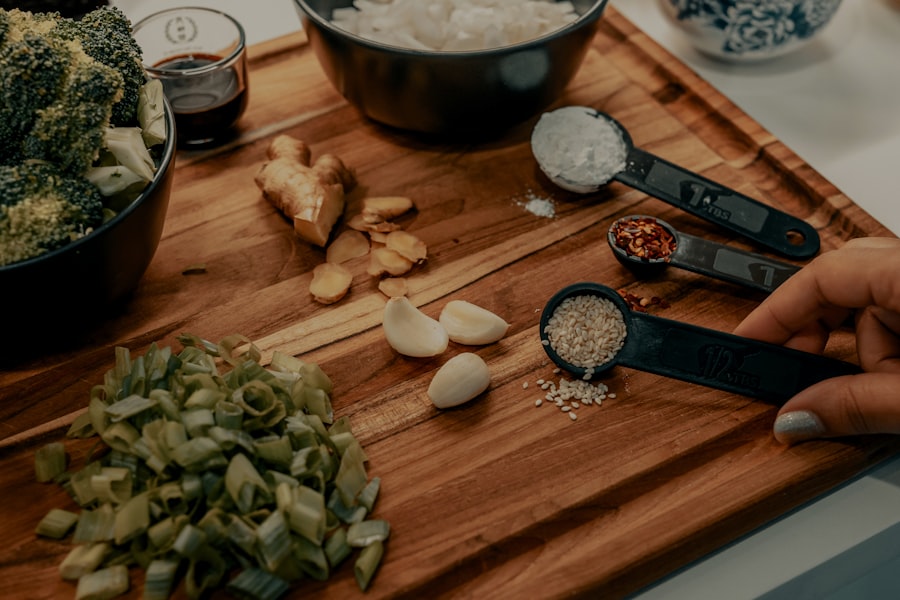Diabetes is a chronic condition that affects how our bodies process glucose, a vital source of energy. When we think about diabetes, we often consider the importance of managing blood sugar levels to prevent complications. Meal planning plays a crucial role in this management, as it allows us to make informed choices about what we eat and when we eat it.
By understanding the relationship between food and blood sugar, we can take proactive steps to maintain our health and well-being. In our journey to understand diabetes, we recognize that there are different types of the condition, including Type 1, Type 2, and gestational diabetes. Each type has its own unique challenges and requires tailored approaches to meal planning.
For instance, individuals with Type 1 diabetes must carefully balance their insulin doses with carbohydrate intake, while those with Type 2 diabetes may focus on weight management and insulin sensitivity. Regardless of the type, effective meal planning is essential for everyone living with diabetes, as it empowers us to make healthier choices and maintain stable blood sugar levels.
Choosing the Right Foods for a Diabetes-Friendly Meal Plan
When it comes to creating a diabetes-friendly meal plan, the selection of foods is paramount. We should prioritize whole, unprocessed foods that are rich in nutrients and low in added sugars. Incorporating a variety of fruits, vegetables, whole grains, lean proteins, and healthy fats can help us achieve a balanced diet that supports our health goals.
For instance, leafy greens like spinach and kale are excellent choices due to their low carbohydrate content and high fiber levels. Moreover, we must be mindful of the glycemic index (GI) of the foods we choose. Foods with a low GI are digested more slowly, leading to gradual increases in blood sugar levels.
This means that opting for whole grains like quinoa or brown rice instead of white rice can be beneficial for our blood sugar management. Additionally, incorporating legumes such as lentils and chickpeas can provide us with both protein and fiber, making them ideal components of our meals.
Portion Control and Meal Timing

Portion control is another critical aspect of meal planning for diabetes management. By being aware of serving sizes, we can better regulate our carbohydrate intake and prevent spikes in blood sugar levels. Using measuring cups or a food scale can help us accurately gauge portions, ensuring that we consume appropriate amounts of food at each meal.
It’s also helpful to familiarize ourselves with visual cues for portion sizes; for example, a serving of protein should be about the size of our palm. Meal timing is equally important in managing diabetes. We should aim to eat at regular intervals throughout the day to maintain stable blood sugar levels.
Skipping meals can lead to fluctuations in glucose levels, which can be detrimental to our health. By planning our meals and snacks ahead of time, we can create a routine that works for us, allowing us to enjoy our food while keeping our blood sugar in check.
Incorporating Fiber and Protein into Your Meals
Fiber and protein are two essential components that we should focus on incorporating into our meals. Fiber helps slow down the digestion of carbohydrates, which can lead to more stable blood sugar levels. Foods high in fiber include fruits, vegetables, whole grains, nuts, and seeds.
By including these foods in our diet, we not only support our blood sugar management but also promote digestive health. Protein is equally important as it helps us feel full and satisfied after meals. Including lean sources of protein such as chicken, fish, tofu, or legumes can enhance the nutritional quality of our meals.
Additionally, protein has a minimal impact on blood sugar levels compared to carbohydrates, making it an excellent choice for those managing diabetes. By combining fiber-rich foods with protein sources in our meals, we create a balanced plate that supports our overall health.
Creating Balanced and Nutritious Meals
Creating balanced and nutritious meals is essential for maintaining our health while managing diabetes. A well-rounded meal should include a combination of carbohydrates, proteins, and healthy fats. For example, a plate filled with grilled chicken (protein), quinoa (carbohydrate), and steamed broccoli (fiber) provides us with a variety of nutrients that work together to support our bodies.
We should also pay attention to the colors on our plates; a diverse array of colorful fruits and vegetables not only makes our meals visually appealing but also ensures that we receive a wide range of vitamins and minerals. Incorporating healthy fats from sources like avocados or olive oil can further enhance the nutritional value of our meals while promoting heart health—a crucial consideration for those living with diabetes.
Meal Prepping and Planning Ahead

Meal prepping is an effective strategy that can simplify our lives while managing diabetes. By dedicating time each week to prepare meals in advance, we can ensure that we have healthy options readily available when hunger strikes. This practice not only saves us time during busy weekdays but also reduces the temptation to reach for unhealthy snacks or fast food.
When meal prepping, we can batch-cook grains, proteins, and vegetables to create versatile components that can be mixed and matched throughout the week. For instance, cooking a large batch of brown rice or quinoa allows us to pair it with different proteins and vegetables each day. Additionally, portioning out snacks like cut-up fruits or nuts can help us stay on track with our dietary goals while making healthy choices more convenient.
Snack Ideas for Managing Blood Sugar Levels
Snacking can be an important part of our meal planning strategy when managing diabetes. Choosing the right snacks can help us maintain stable blood sugar levels between meals while providing essential nutrients. We should aim for snacks that combine protein and fiber to keep us feeling full and satisfied.
Some great snack ideas include Greek yogurt topped with berries, which offers both protein and antioxidants; hummus paired with carrot sticks or whole-grain crackers; or a handful of nuts mixed with dried fruit for a satisfying combination of healthy fats and carbohydrates. By preparing these snacks ahead of time or keeping them on hand at home or work, we can make healthier choices that support our blood sugar management.
Seeking Professional Guidance for Personalized Meal Plans
While we can certainly take steps toward managing diabetes through meal planning on our own, seeking professional guidance can provide us with personalized strategies tailored to our unique needs. Registered dietitians or certified diabetes educators can help us navigate the complexities of meal planning by offering insights into portion sizes, food choices, and meal timing based on our individual health goals. Working with a professional allows us to develop a comprehensive meal plan that considers our preferences, lifestyle, and any other health conditions we may have.
They can also provide ongoing support and education as we adapt to new eating habits and monitor our progress over time. Ultimately, having expert guidance can empower us to take control of our health while enjoying the process of creating delicious meals that nourish our bodies. In conclusion, understanding diabetes and implementing effective meal planning strategies are essential steps toward managing this condition successfully.
By choosing the right foods, practicing portion control, incorporating fiber and protein into our meals, creating balanced dishes, meal prepping ahead of time, selecting healthy snacks, and seeking professional guidance when needed, we can take charge of our health journey with confidence. Through these efforts, we not only support our blood sugar management but also enhance our overall well-being and quality of life.
